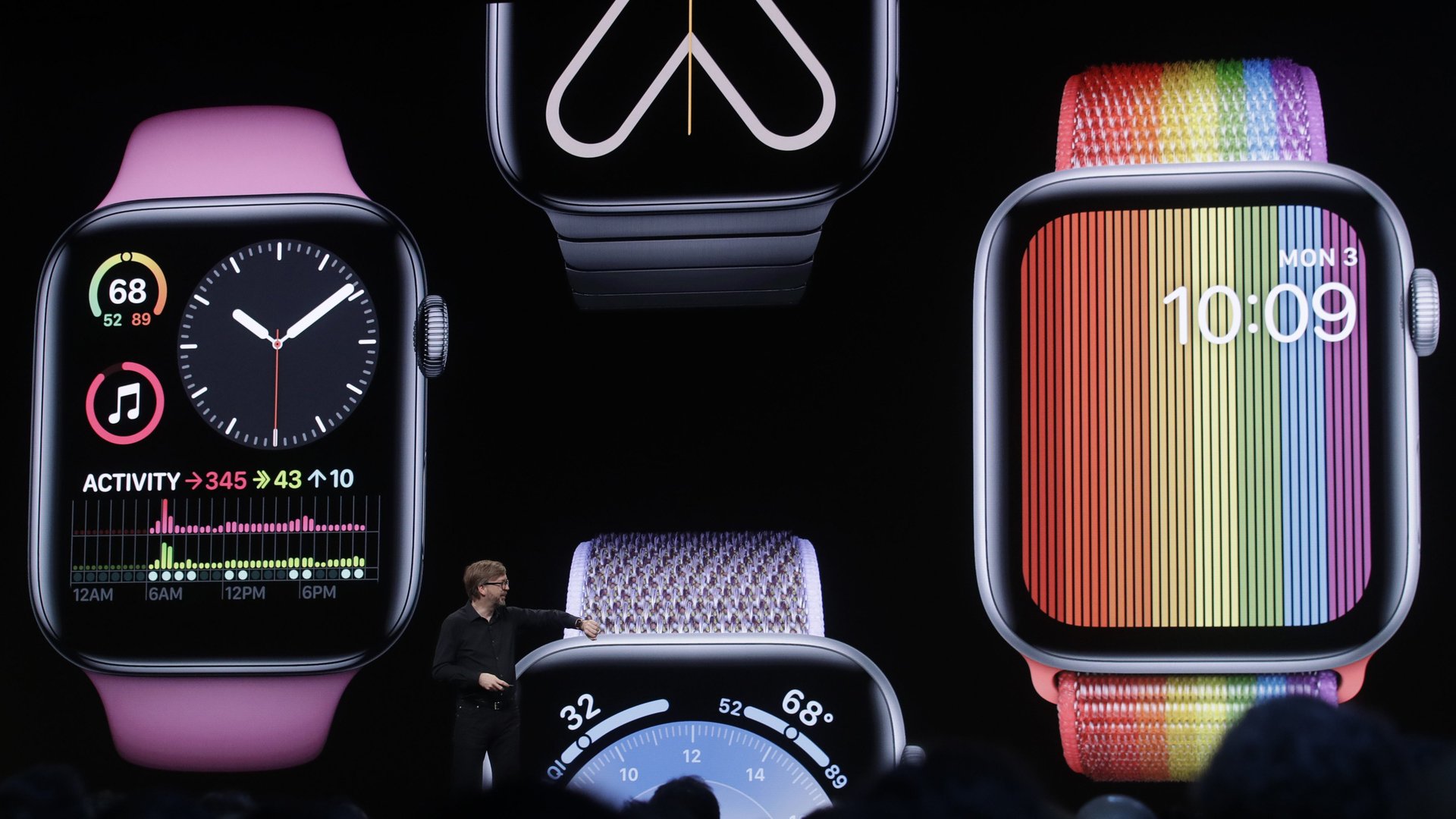Apple’s path to success beyond the iPhone is becoming clear
The iPhone is still far and away Apple’s most important product today, but there may be a time soon when it goes the way of the iPod.


The iPhone is still far and away Apple’s most important product today, but there may be a time soon when it goes the way of the iPod.
Apple announced its third-quarter earnings July 30 (its year ends in September), and on the surface, things could have looked better. Revenue for the iPhone, the company’s cash cow for over a decade, dropped sharply, and accounted for less than 50% of quarterly revenue for the first time since the fall of 2012.
Even with slowing iPhone sales, Apple was able to (just barely) grow revenue for the quarter year-on-year, ending a multi-quarter slide. And under the surface, there are a few signs that point to a future where the company can still be successful, even without the iPhone at the helm.
First, the company’s services business—sales of apps, games, videos, AppleCare, and Apple Pay fees—has been the dominant story for Apple over the past few years. The business brought in over $11 billion in revenue in the quarter alone, and on its own is the size of a Fortune 100 business.
But CEO Tim Cook highlighted another trend developing in Apple’s burgeoning wearables business. Sales in its accessories category—which includes Beats headphones, cases, and HomePod speakers, as well as the Apple Watch and AirPods—are skyrocketing. The category grew by nearly 50% over the same period last year, and at $5.525 billion in revenue, sales came within $0.3 billion of overtaking the Mac as Apple’s second-largest hardware business.
Cook put the jump down to robust Apple Watch and AirPods sales in particular, and it seems that Apple is setting itself up for a mobile-computing future that doesn’t revolve around the iPhone.
Apple introduced its second generation of AirPods in March, mainly adding two key features to the already excellent earbuds. The new AirPods case can charge wirelessly, and the wearer can activate Siri by just saying “Hey Siri” in the same way they would on an iPhone or HomePod. The company also introduced the fourth generation of Apple Watch last September, including a cellular LTE version that can operate independently of the iPhone.
It’s not difficult to imagine a world where the importance of the iPhone fades into the background, replaced by less-intrusive devices that can ambiently provide information and take requests when needed. Right now, it’s possible to replace your iPhone with AirPods and an Apple Watch, listening to music and podcasts, taking calls and even using Siri to find places to eat or shop, and the watch for directions on how to get there. As Siri improves, it’ll be easier to dictate information to the virtual assistant, as well.
But there will invariably still be times when you want to look at something, rather than hear about it. We’ll likely still be carrying screens in our pockets and bags for the near future, but it’s possible their importance wanes when more information is given to us through wearables. And Apple is investing heavily in future products, too. It spent over $12 billion on research and development in the first three quarters of the year, its recent earnings report stated, which is roughly as much as it had through the same period last year. All of that money isn’t being poured into just making slightly nicer iPhones.
The company is working on myriad new products, many of which will likely never see the light of day (whatever happened to its fabled car project?), but it is reportedly working on developing augmented-reality hardware beyond the iPhone. There have been rumors and reports that it plans to release a set of AR glasses as early as 2020, and a longtime company veteran has just been put in charge of the AR hardware team. Much like early Apple Watches, it seems that much of the computing power for these glasses would be offloaded to a wirelessly paired iPhone.
Apple has been trying to shore up falling iPhone sales through investment in the services it offers, but it’s possible that what comes after the iPhone may well have started out life as an accessory to the iPhone.